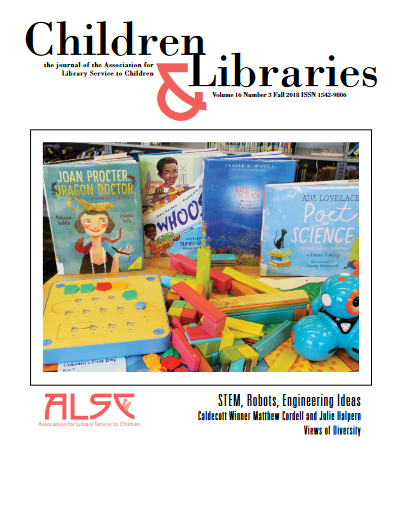Resources in Children and Libraries for Supporting Early Literacy Through Play
2024/1/15 点击数:77
[作者] Brittany Adams
[单位] the University of Alabama
[摘要] Play is a crucial aspect of cognitive development in young children.It is recognized by the Every Child Ready to Read program as one of the five key early literacy practices that can help promote reading readiness.Playing,exploring,and experimenting with open-ended materials as well as building concepts through direct experiences with people and objects are essential for healthy growth and development.Further,when parents and caregivers sit down to play and talk with their children they draw out babble and burgeoning language from babies and toddlers.As a result,children who engage in language-rich play in their early years are likely to start school with upwards of 10,000 more words in their oral language vocabulary than peers living in less stimulating environments.
[关键词] Children and Libraries,Supporting Play
Play is a crucial aspect of cognitive development in young children.It is recognized by the Every Child Ready to Read program as one of the five key early literacy practices that can help promote reading readiness.Playing,exploring,and experimenting with open-ended materials as well as building concepts through direct experiences with people and objects are essential for healthy growth and development.Further,when parents and caregivers sit down to play and talk with their children they draw out babble and burgeoning language from babies and toddlers.As a result,children who engage in language-rich play in their early years are likely to start school with upwards of 10,000 more words in their oral language vocabulary than peers living in less stimulating environments.
Yet many caregivers are puzzled when it comes to play with a very young child,particularly those still gaining language.With mounting pressure for children to learn more and earlier,caregivers often assume that even very young children’s activities must be school-like.Many caregivers do not realize that play itself is a rich and unparalleled learning activity.A child stacking blocks is developing math skills.When babies pull books off the shelves,they are experimenting with gravity and figuring out the properties of books.Trips to the sandbox and bathtime water play are all early science experiments.
For these reasons,library staff recognize that children’s programs extend beyond story hour to include structured and unstructured play.Children and Libraries(CAL),the official journal of the Association for Libraries Service to Children(ALSC),has long been a proponent of innovative play programs.For readers interested in learning about unique practices or seeking inspiration for their own programming,there is much to glean from the CAL archives.All current issues are free to ALSC membership,and articles over a year old are available through an open access archive.Brittany Adams,Assistant Professor of Literacy Education at the University of Alabama,is writing this post on behalf of the ALSC Children&Libraries Editorial Advisory committee.
This post addresses the following ALSC Core Competencies:V.Advocacy&Outreach;VII.Professionalism and Professional Development.

